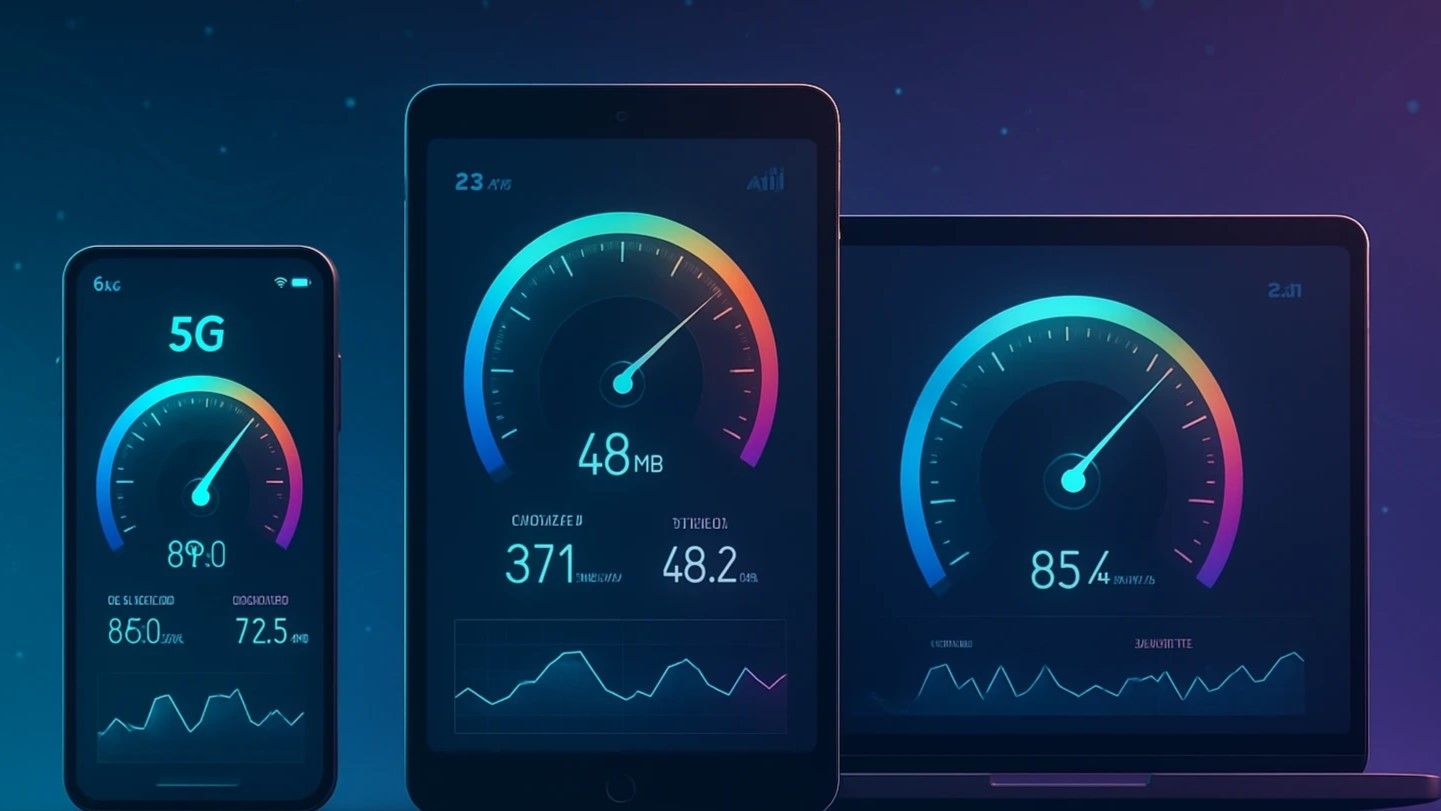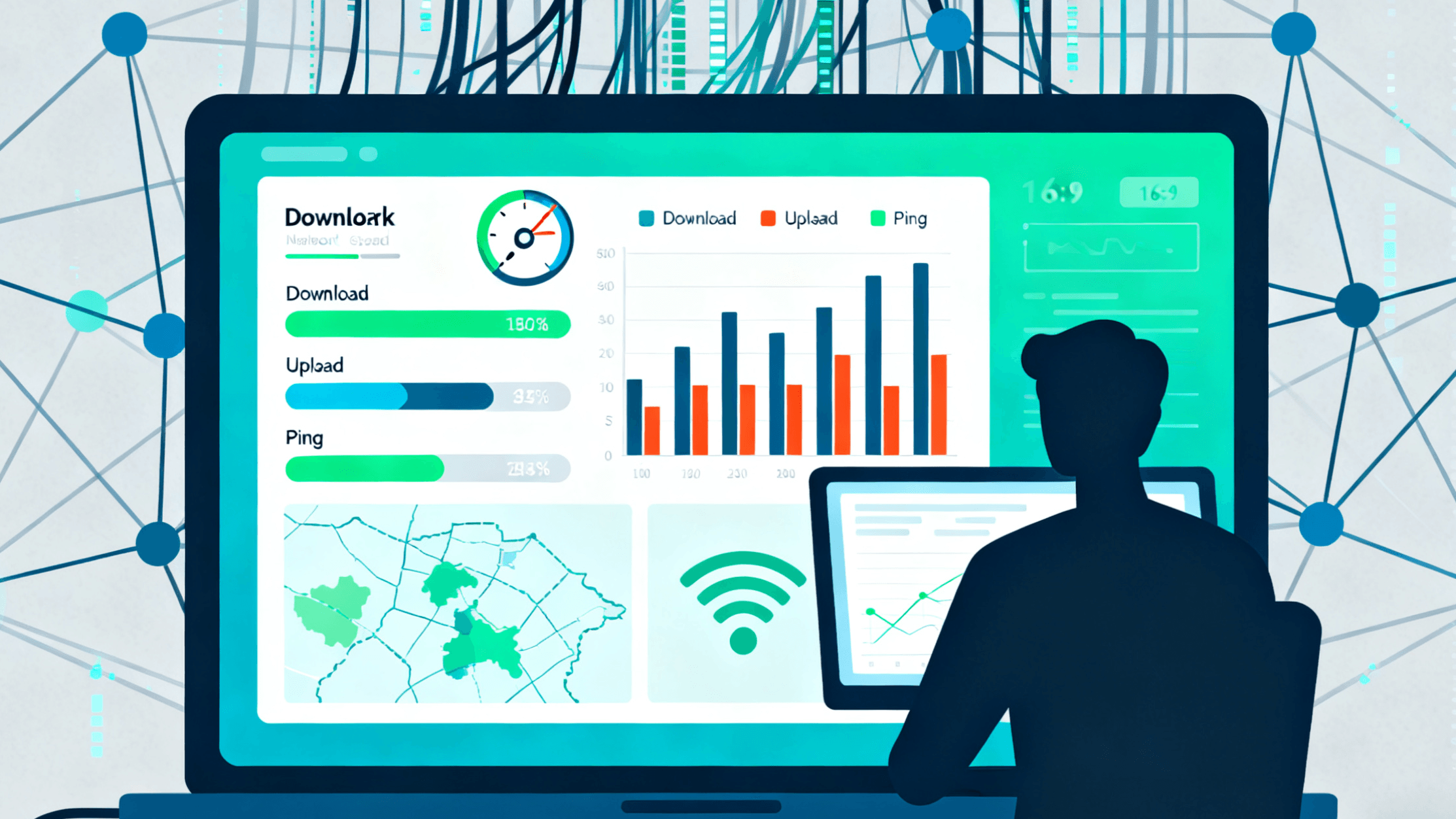How to Choose the Best Broadband or Mobile Network Provider for You
In the information age, the internet has become a daily “necessity.” Whether you’ve just moved, are heading to college, working remotely, or simply thinking of switching providers, you need a reliable broadband or mobile carrier. Faced with countless plans and marketing slogans, many people ask: how can I choose a plan that’s both stable and cost-effective?
This article walks you through how to pick the best network plan from the perspectives of speed, price, coverage, and service, and shows how to use the ToDetect Online Network Speed Test Tool to evaluate network quality and avoid pitfalls.

I. Know Your Current Status: Is Your Network Really Enough?
If you’re considering switching providers, the first step isn’t comparing prices — it’s understanding your current network performance.
Open the ToDetect Online Network Speed Test Tool and run a one-click test to get these core metrics:
- Download speed: affects page loading, video playback, and file downloads.
- Upload speed: affects video calls, cloud sync, and live streaming.
- Latency (Ping) & Jitter: determine smoothness for gaming and real-time calls.
From these numbers you can tell whether your current service meets expectations:
- If test results are well below the advertised plan (under ~80%), there may be line or device issues.
- If latency is high, it may be a quality or signal coverage problem.
Identify the real issue first — then compare new broadband or mobile plans with purpose.
II. Set Your Priorities: Speed, Price, or Stability?
Everyone’s needs differ, so before choosing a carrier, decide what matters most to you.
1. Speed-first
If you frequently do video meetings, play online games, or watch 4K content, prioritize speed and low latency.
- Home users: consider 100 Mbps+ plans.
- Households with many users, gamers, or cloud workers: 500–1000 Mbps is more ideal.
2. Value-first
If your main activities are web browsing, video streaming, and social media, mid-tier bandwidth is enough.
- 50–100 Mbps usually covers everyday use.
- Don’t overpay for “gigabit” plans you won’t fully utilize.
3. Stability-first
In some areas, high-bandwidth plans still suffer from big fluctuations — especially during peak times.
Choosing a provider with good local coverage and solid reputation is often better than chasing raw speed.
III. Pay Attention to Coverage and Signal Quality
Different providers perform differently across regions. For mobile (4G/5G) especially, poor local signal means even a high-speed plan can’t deliver.
Before signing up:
- Use ToDetect to test signal strength and speeds for different carriers in your actual locations.
- Compare results at home, office, or school to judge coverage stability.
- Ask neighbors or colleagues about their experience.
For 5G users: if your area isn’t fully covered yet, you may not need to pay extra for high-band 5G plans right away.
IV. Don’t Overlook Plan Details and Extra Perks
Beyond speed, many plans bundle extra benefits:
- Free streaming subscriptions (e.g., video memberships)
- Cloud storage space
- Home Wi-Fi enhancements or smart gateway devices
- Bundles including mobile SIMs, landline, or TV services
These perks can save money long-term and improve experience — but read the fine print for throttling, data caps, or installation fees.
V. Use Test Data and User Feedback as Reference
Before you switch, check real test data locally: average download/upload speeds, latency ranges, and connection stability will help you pick the best brand for your city.
If possible:
- Test networks from several providers and compare.
- Record results at different times (morning, evening).
- Combine test data with real user reviews on forums and social media.
VI. Broaden Your Options: More Than One Way to Get Online
Besides fiber and mobile data, alternative solutions exist:
- Fixed Wireless Access (FWA): home broadband over 4G/5G signals.
- Satellite Internet: suitable for remote or field environments.
- Community or municipal networks: some cities provide shared, more affordable public networks.
If traditional lines are limited in your area, consider these alternatives.
VII. If traditional lines are limited in your area, consider these alternatives.
Choosing a network provider isn’t just about price or headline bandwidth numbers — it’s about real experience. A truly stable, fast, and well-covered network will keep you connected at home, at work, and on the go.
Before making a final choice, run the ToDetect Online Network Speed Test Tool to check your current connection. Use the data — not ads — to pick the plan that really fits you.
 AD
AD 5G, 4G and Wi-Fi Network Speed Test Comparison: Which is Faster?
5G, 4G and Wi-Fi Network Speed Test Comparison: Which is Faster? How to Choose the Best Broadband or Mobile Network Provider for You
How to Choose the Best Broadband or Mobile Network Provider for You Mobile and PC Broadband Speed Test Guide: Check Your Internet Speed in One Minute
Mobile and PC Broadband Speed Test Guide: Check Your Internet Speed in One Minute How to Use ToDetect to Check Your Browser Fingerprint?
How to Use ToDetect to Check Your Browser Fingerprint? The Ultimate Anti-Linking Tool for Multi-Account Matrix Marketing: Browser Fingerprint Detection
The Ultimate Anti-Linking Tool for Multi-Account Matrix Marketing: Browser Fingerprint Detection One-Click Browser Fingerprint Check! The Ultimate Guide to Preventing Account Linking and Bans on Amazon/eBay Multi-Store Operations
One-Click Browser Fingerprint Check! The Ultimate Guide to Preventing Account Linking and Bans on Amazon/eBay Multi-Store Operations